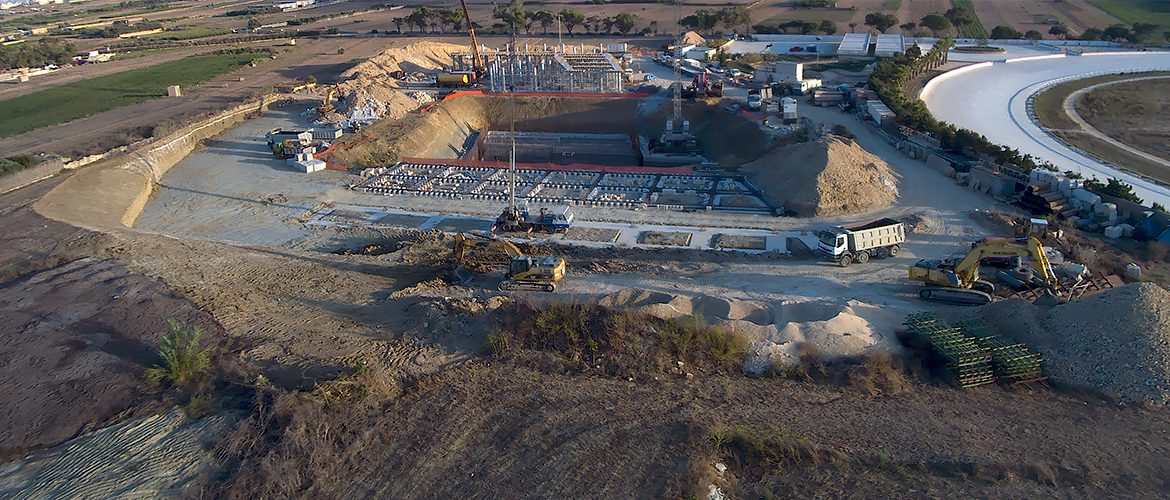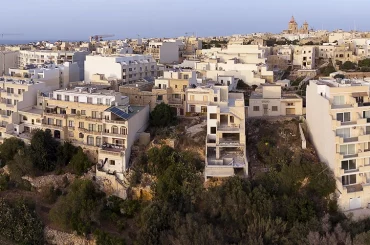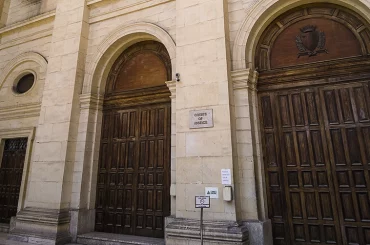Do you know what is the connection between a large hole in the landscape at Ta Xhajma and a forlorn crossroads near the heliport in Ghajnsielem, where the Ministry of Gozo’s electric buses are usually found largely bereft of the commuters who are supposed to be shuttling back and forth to the Gozo ferries?
The connection? The hole at Ta Xhajma is set to be a glorified car park one day, set to replace the temporary parking spot at the crossroads. But seeing those buses lying idly, with the number of parked cars on a supposedly busy weekday morning significantly less than a hundred, it makes you wonder why the government is spending a reported €7 million to construct the park-and-ride Ta Xhajma.

Promote car use and call it carbon neutral
The idea behind the park-and-ride is simple: to have commuters to Malta leave their cars at the car park and then be taken to the ferry in the electric buses, as a way to tackle vehicle congestion at Mgarr Harbour. The government has hyped the project as a green project.
So – we bury a piece of landscape in concrete, we devise a system that promotes car use (commuters have to drive to the remote park-and-ride in the first instance), we plan to put a green roof on top of the car park and we then call it – as the Parliamentary Secretary for EU funds did – an investment in projects that are green and carbon neutral.
This begs the question. Instead of spending millions to build a car park in the countryside that commuters would have to drive to before they can then take a bus to Mgarr Harbour, would it not have been more sustainable – and possibly cheaper for the government – to spend the money on a network of buses that would convey commuters directly from Gozitan towns to Mgarr Harbour and back? That way people would not need to drive to the car park in the first place, they could leave their car at home and – more importantly – those who do not have a car would still be served.
As things stand, the park-and-ride promotes car use because people need a car to get to it.
And it gets even worse: as the forlorn temporary park-and-ride shows, not many people are using the service, certainly much less than envisaged.

Planned airport another fantasy
The crossroads where the gleaming Ministry for Gozo electric buses lie largely empty is also set for another debacle: the redevelopment of the defunct heliport into an airport that is being called an “airfield”, and that is being hyped – wait for it – as a way to create “a General Aviation ecosystem” in Gozo.
The first attempt to build an airport was made almost thirty years, and the latest incarnation comes on the heels of another failed fantasy – a tunnel between Malta and Gozo.
The story of the tunnel and the airport are linked even if they represent two of the hotchpotch of ideas for transport in Gozo. Until a few years ago, calls for an “airstrip” by sections of Gozo’s businessmen (yes, they are mostly men, so the term businesspeople would not be fitting) were diplomatically dismissed by the government as not being ‘a priority.’ The priority was the promised tunnel. Construction and completion of the tunnel was even given a timeline in 2017.
Then the tunnel has stopped being mentioned for the past two years, and Gozo’s old guard in the business and political community saw their chance: with plans for the tunnel abandoned, they could push through the airstrip idea again.
But, aside from the new term – calling it airfield rather than airstrip – what would make the airport viable now after thirty years of failed tries?

Nothing more than the same suppositions or fantasies that led to failure in past tries. The assumption remains the same: that half or more of all Gozitans travelling abroad would take the airplane to get to the airport and pay €30 per passenger for single ticket. This means that if you are a family of three, it would cost you €90 to fly to the airport, but if you take the ferry and a taxi it would only cost half as much and take you about 45 minutes more. My bet is that, given these modalities or choices, most families would take the ferry and a taxi and save €45.
Another assumption is that people, particularly businesspeople, would take the plane to travel to Gozo or Malta for meetings. This is utter fantasy if not nonsense: most businesspeople (and there are not that many) will drive, or at least take the fast ferry. Besides, the modern trend is towards having online conferences and cutting down on physical travel for business meetings.
Yet another assumption is that the airport would attract higher-quality tourists, and that people would travel directly to Gozo from neighbouring countries. They said the same in the past – and then the helicopter service folded.
Another claim still is that the airport will attract flight schools, drone operators, and small aircraft for leisure or tourism. It might do to some extent, but will it be enough to make it economically feasible? These are fringe activities, the main economic lifeline of the airport would be Gozitans and visitors to Gozo travelling back and forth to the airport in Luqa – and, as pointed above, it is fair to assume that most people would take the ferry and taxi because these are considerably cheaper.

Debacles, squander, and broken roads
The airport seems to be shaping up into another transport fiasco, like the park-and-ride or the fast ferries.
The fast ferries went through so many twists. Initially the plan was for a fast ferry that would convey people and cars to the Grand Harbour. Then the idea was downgraded to passenger-only fast ferry. Then one tender after another was mismanaged and nullified by the court until the government decided to allow anyone to offer the service – and two companies started offering the service. A year later they both announced simultaneously that they were making a loss and would cease operations unless they got State funds. The government then starting giving them many millions every year. Now they have announced they are merging into one company.
A question begs itself: if the government has to prop private companies from our taxes to run the fast ferry service, then why not offer the service itself though the State-owned Gozo Channel?

How long will the country continue to put up with the ever-growing cost of mismanagement in transport in Gozo?
And how long will Gozitans continue putting up with broken arterial roads? All of Malta’s arterial roads are now smooth and modern, but the same cannot be said of Gozo. Most of the roads that connect villages or towns are broken and there is a plan to fix only one of them, the road between Rabat and Marsalforn. The roads that are badly broken include the major ones between Rabat and Xaghra, Rabat and Xewkija, and Rabat and Nadur.
So why not use the millions being squandered on projects set for failure to instead fix Gozo’s arterial roads instead, and improve public transport, and actually make a difference in people’s lives?
Sustain Analyses & Insight
Robustly researched and professionally delivered analyses and insight features on this website take much time, effort, and resources to produce. This website's donation setup itself is uniquely transparent, with targeted amounts – of just €50 every month for analyses – that allow tracking of donations in real time on the page. Contribute as little as €5.





